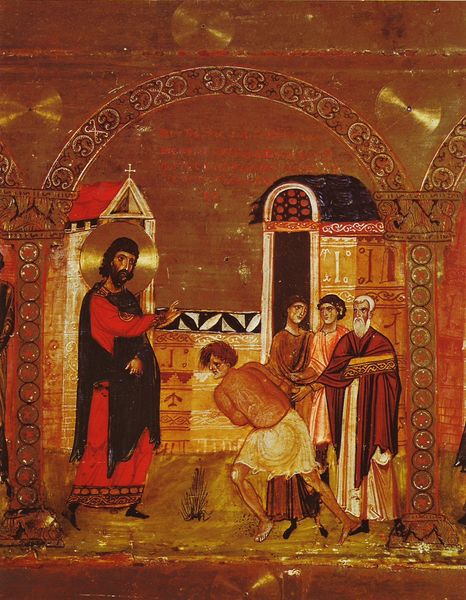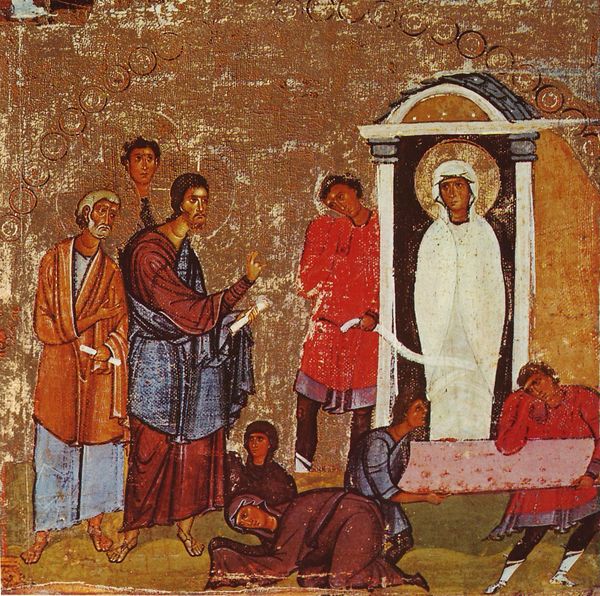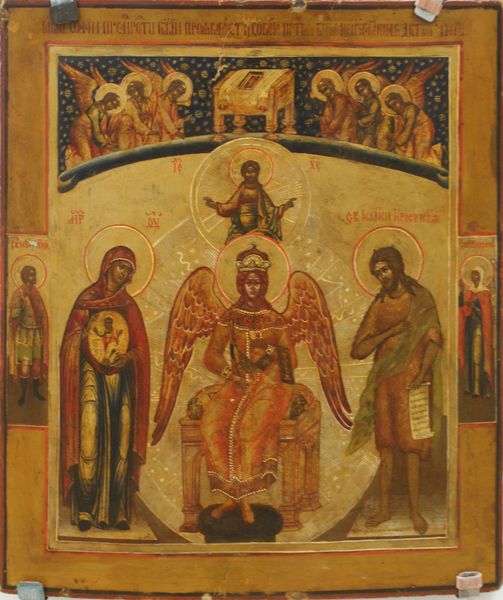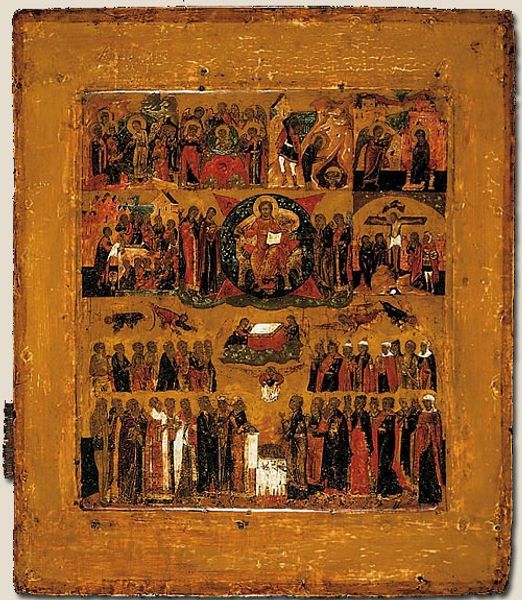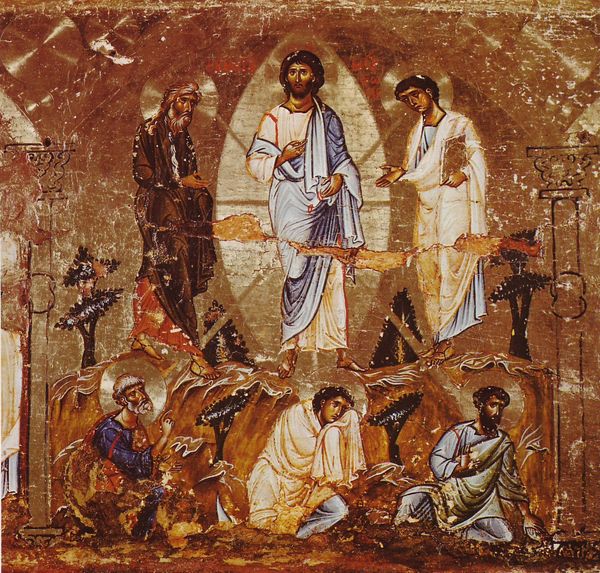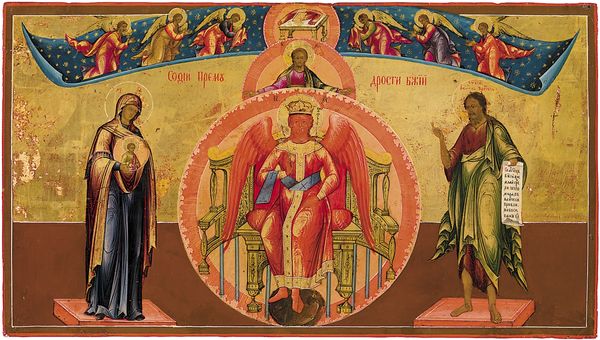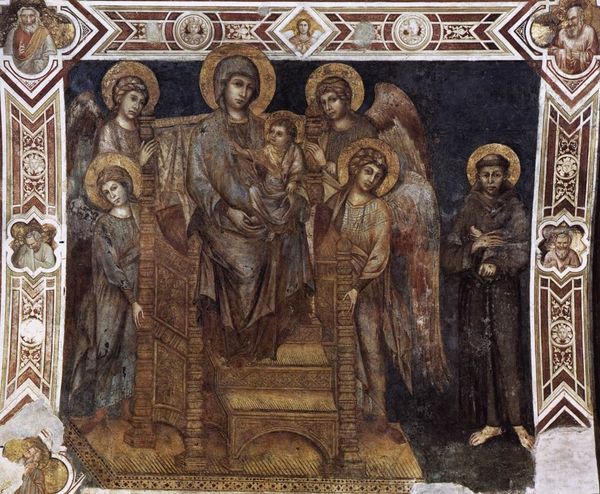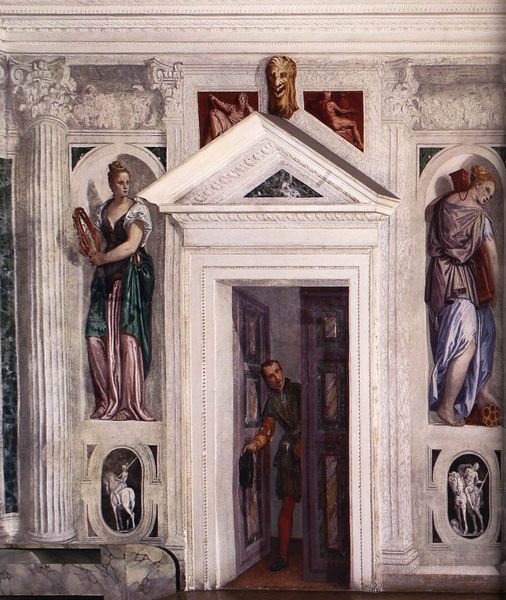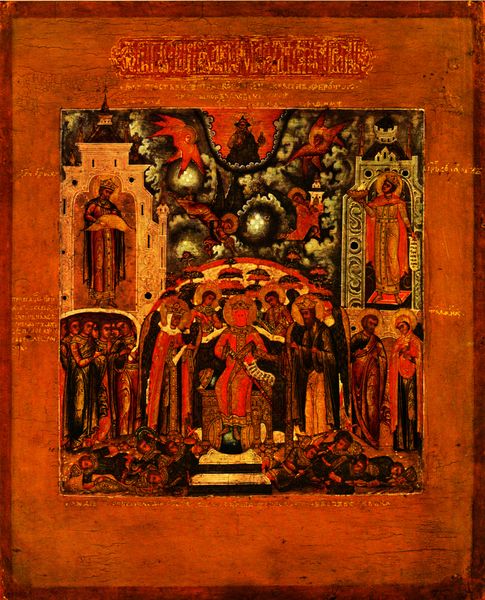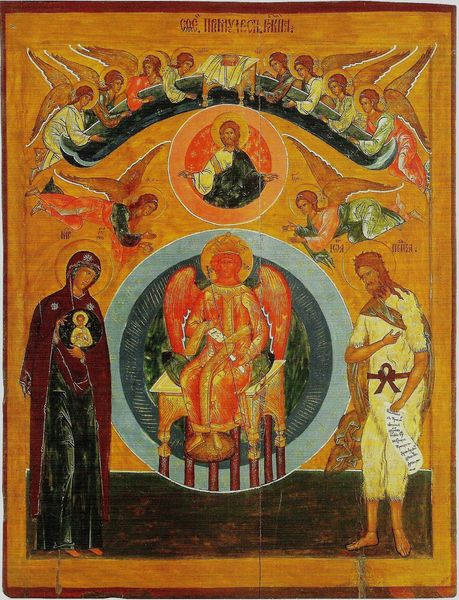
tempera, painting
#
portrait
#
byzantine-art
#
medieval
#
narrative-art
#
tempera
#
painting
#
figuration
#
oil painting
#
history-painting
Copyright: Orthodox Icons,Fair Use
Editor: This is "Lazarus Miracle," a tempera on panel painting from 1300, currently housed at Saint Catherine's Monastery. It feels crowded, with so much happening in one space, but the resurrected Lazarus looks strangely peaceful, almost like he is glowing. What do you see in this piece, beyond the surface narrative? Curator: Ah, yes. Beyond the literal depiction of the miracle, observe the symbolism inherent in Byzantine art. Notice the darkness on the left, balanced by the emergence from the tomb on the right. Darkness represents death and evil, visually opposing the life and promise offered by Christ. This juxtaposition is crucial. Editor: So, the darkness isn't just a background element; it actively contributes to the painting's meaning? Curator: Precisely! It embodies the very struggle Christ is overcoming. And consider Lazarus himself, wrapped tightly. This swaddling speaks to not only burial but also perhaps rebirth, a return to infancy in a spiritual sense. Note the expectant faces. Editor: They do seem like they're witnessing more than just someone getting out of bed. Is that why Lazarus has a halo even though he wasn’t a saint or anything? Curator: Good observation! His halo is used as an iconographic identifier rather than a claim to sainthood. It distinguishes him from other regular figures and announces that he's part of a divine moment, momentarily touched by the glory of God. What feeling does this combination evoke in you? Editor: The image leaves me feeling like physical death doesn't need to be the final word. It carries more layers than just one simple Bible story. Thanks for pointing out these nuances. Curator: And thank you for your willingness to look beyond the obvious. Images are never merely illustrations, but echoes of deeper truths.
Comments
No comments
Be the first to comment and join the conversation on the ultimate creative platform.

